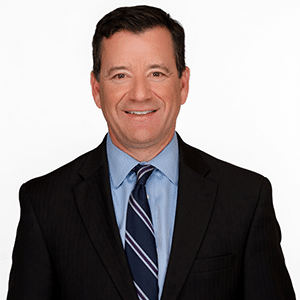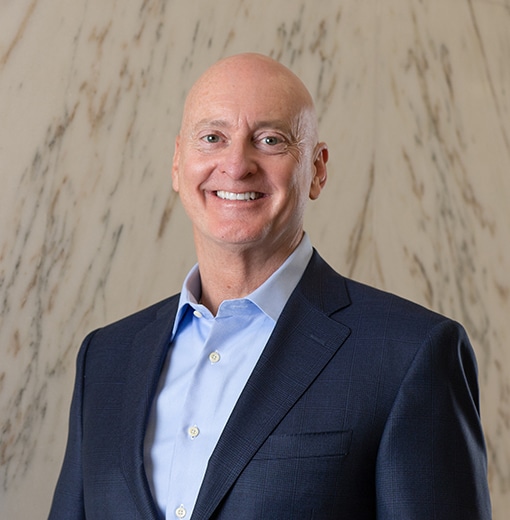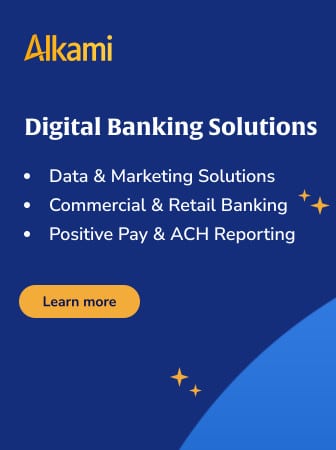Keeping up with technology. Hiring and retaining talented employees. Attracting deposits and stressing over the net interest margin.
Community bank leaders identify these as some of the biggest obstacles they face right now. Although the current list might sound similar to those in years past, they feel like the operating environment is tougher this time around.
The worry is that today’s undercurrents could threaten their business model — which, for the bankers we spoke to, has kept their institutions going for more than 100 years.
The “secret sauce” for community banking always has been “access to low-cost funding in our own backyard,” says Chuck Leach, the president and chief executive officer of the $538 million-asset Lee Bank in Massachusetts. “The typical longtime depositor didn’t look out across the landscape for higher-yielding platforms.”
He’s seen this changing steadily, with the Federal Reserve’s aggressive rate hikes in recent years only speeding up the process. He wonders if younger generations — who will replace older ones as the core funding base at community banks — will demand deposit rates that force the industry to reset expectations for net interest margins.
“It’s dangerous to hide under a rock and hope and pray that this doesn’t happen,” Leach says.
A 2023 survey of 5,000 U.S. banking customers by EPAM found that Baby Boomers were less likely to have a megabank as their primary financial institution (36%) than millennials (48%). The survey also points to rates as a major motivator for switchers. Though the factors that could prompt U.S. consumers to change banks varied by age, the top reason overall was “good interest rates” (25%), followed by “reduced fees” (20%), according to the EPAM data.
“It’s dangerous to hide under a rock and hope and pray that this doesn’t happen.”
— Chuck Leach, Lee Bank
Two other community bank CEOs — Bernie Gaytko of Keen Bank in Waseca, Minn., and Brad Bolton of Community Spirit Bank in Red Bay, Ala. — echo Leach in citing the net interest margin as a major issue.
But Bolton, a past chairman of the Independent Community Bankers Association, emphasizes “regulatory overreach” as the greatest threat. He cites the attack on overdraft programs and the call for climate risk assessments as examples where, he argues, legislators need to differentiate between big and small banks.
“There should never be a one-size-fits-all approach to regulation, and currently, that is what we are facing,” Bolton says.
All three banks are betting on growth to help them navigate the challenges. Keen Bank and Community Spirit Bank each plan to add a new branch. And Leach points to a 3,000-square-foot branch that Lee Bank opened in January 2023 as a point of pride.
“It feels decidedly unbank-like, which we did purposely to invite those in who might not feel welcome in a bank or might not trust a bank,” he says.
The mixed-use building, which the bank built on a downtown corner in Pittsfield, Mass., is meant to foster community engagement. It has four apartments upstairs, a garden in the back, and a community room with after-hours access that Leach says is getting “a lot” of use. A nonprofit that works with young people on outdoor projects manages the garden.
Here are more of the challenges and opportunities these CEOs see ahead for community banking in general and their banks specifically.

Navigating Credit Card Issuing in an Uncertain Economic Environment
Build a modern credit card strategy that balances profitability and risk, adopts the latest technology and delivers the customization that cardholders demand.
Read More about Navigating Credit Card Issuing in an Uncertain Economic Environment

Banking Transformed Podcast with Jim Marous
Listen to the brightest minds in the banking and business world and get ready to embrace change, take risks and disrupt yourself and your organization.
Challenges: Tech, Talent & Deposits
Opportunity: Wealth Management

Chuck Leach
President and CEO
Lee Bank (Lee, Mass.)
Asset size: $538 million
Branches: 5
Year founded: 1852
Biggest threats facing community banking:
As with any industry, a number of threats face banking, including community banks with under $1 billion in assets. Our challenges are probably very similar to what you would hear from other banks our size:
• Staying on the forefront of innovation in light of consumer expectations, which is an “Amazon-like” or “Uber-like” user experience these days.
We have to consider what can we afford, what can we not afford and how easily will our core provider (Fiserv) enable integration with game-changing third-party providers of technology solutions?
• Access to talent.
Our operating philosophy still puts an emphasis on the in-person, in-branch experience. Yet we strongly believe the engagements that happen in branches will be more guidance and advice-driven, which requires an up-skilled individual (more of a “knowledge worker” to use Peter Drucker’s terminology). Given the industry we’re in plus our geographical area, can we recruit and retain this type of person?
• Our funding model.
For decades, if not centuries, the community bank secret sauce is or was access to low-cost funding in our own backyard. The typical longtime depositor didn’t look out across the landscape for higher-yielding platforms to store their liquidity, but this has steadily been changing and was further catalyzed with the Federal Reserve raising rates so aggressively. The iPhone also changed this.
“Now, I’m not so sure that as new generations take over from older generations as our core funding base that they won’t be demanding that we index their deposit rates to a more realistic measure. It’s dangerous to hide under a rock and hope and pray that this doesn’t happen!”
This theme impacts our net interest margin, our profitability, our efficiency, and to me is really the threat that stands out the most. The giant has awoken, and as one banker put it, while we put decades into relationship banking and hoping that carries the day, over the past year the depositor has looked past relationship straight to rate!
Biggest opportunity for community banking:
I think community banks with a strong culture and low turnover — both of which we have at Lee Bank — have many opportunities. Highly engaged bankers who feel good about the organization are still able to make connections with customers that are sticky and profitable.
“Now, I’m not so sure that as new generations take over from older generations as our core funding base that they won’t be demanding that we index their deposit rates to a more realistic measure. It’s dangerous to hide under a rock and hope and pray that this doesn’t happen!”
— Chuck Leach, Lee Bank
While larger banks claim to be community banks and relationship-oriented (for example, Berkshire Bank in our backyard), they really can’t be and aren’t even close to what we can offer on both of these fronts. At the end of the day, they sell products and we develop relationships and there will always be an “audience” for this approach.
How Lee Bank plans to tackle its challenges and opportunities:
As far as Lee Bank specifically, we have a number of initiatives underway that are designed to stave off the threats and to take advantage of opportunity.
With a significant investment in a new mixed-used branch in Pittsfield, Mass., we are poised to take advantage of disruption in the market and secure lower-cost funding by focusing on underserved small businesses. With a steadfast commitment and investment in people and technology, we anticipate offering a better user experience for the busy, multi-tasking small business owner but also the retail customer.
Finally, we are leaning into financial planning and wealth management with two full-time planners on staff as well as a significant partnership with a local registered investment advisor, October Mountain Financial Advisors.
Read more:
- Why Community Banks Have an Edge in Wealth Management
- Money-Savvy Gen Z Won’t Stick with Parents’ Banks That Disappoint
Challenge: Net Interest Margin Pressure
Opportunity: Control Expenses & Asset Quality

Bernie Gaytko
President and CEO
Keen Bank (Waseca, Minn.)
Asset size: $176 million
Branches: 3
Year founded: 1874
Biggest threats facing community banking:
Net interest margin compression caused by the Fed’s 11 interest rate hikes in less than two years.
The speed and scope of the increases happened after an unprecedented low-interest rate environment where banks extended out their assets due to competitive pressures.
Biggest opportunity for community banking:
Trim expenses and tighten loan underwriting. Right now, banks can weather the interest rate challenges, but if asset quality starts to deteriorate, this added pressure could challenge many banks.
The biggest challenge this year for Keen Bank specifically:
Profitable deposit growth.
Its biggest opportunity:
The same as for community banking in general.
Technology costs have grown dramatically along with personnel costs. Finding a good balance between the needs of each of these is going to be crucial to grow profitability.
How the bank intends to tackle these challenges and opportunities:
Keen Bank recently relocated a branch to a growing community to capitalize on opportunities for growth and recruitment of personnel.
Read more:
- How 3 Banks Partnered with Fintechs for Growth
- There Are Only Two Kinds of Community Banks: The Innovative and The Doomed

Challenge: Regulatory Overreach
Opportunity: Leveling the Playing Field

Brad Bolton
President and CEO
Community Spirit Bank (Red Bay, Ala.)
Asset size: $200 million
Branches: 6
Year founded: 1908
Biggest threat facing community banking:
The community bank franchise has and will continue to overcome obstacles because of our relationship-focused business model. However, overreaching regulations continue to be the greatest threat we face in meeting the needs of our customers and communities. It often feels like a deadlocked Congress has led to a situation where regulatory agencies have been empowered to govern via rules and regulations.
In many cases, there is no tiered approach and certainly little, if any, distinction from the largest banks, even though they are transactional in nature compared to relationship bankers. There should never be a one-size-fits-all approach to regulation, and currently, that is what we are facing.
“There should never be a one-size-fits-all approach to regulation, and currently, that is what we are facing.”
Why that stands out above other threats:
One of the biggest regulatory issues is the mischaracterization of overdraft programs as “junk fees.” The terms of these programs are clearly disclosed and offered as a service. Labeling these programs, which consumers opt in to, as a bad thing and characterizing them as “junk fees” is just wrong. My community bank provides these programs, which are a great asset to our customers and protect consumers from payday and other predatory lending.
The CFPB’s Section 1071 rule is another rule that nearly doubled the number of required data fields in the statute, representing a nearly six-fold increase in data collection. Even worse, it raises significant privacy and security concerns that stand to put a government barrier between me and my customers. That’s why we are fighting for an exemption for community banks.
Those are two real examples of overregulation.
Climate risk assessments represent another threat to community banks that expertly manage balance sheet risks every day as part of the normal course of doing business. It’s what has allowed us to flourish for decades. So new, onerous, and expensive climate risk management frameworks are counterproductive. We don’t need additional rules and regulations that will choke off credit to creditworthy borrowers.
Biggest opportunities for community banking:
Our biggest opportunity is continuing to educate policymakers and the public on what makes a community bank different from large and regional banks as well as credit unions.
We lend where we live and are vested in the success of those we serve. No one understands their market better than a local community banker.
I also think we have a real opportunity to highlight the difference between a tax-paying community bank and a tax-exempt credit union, and how we compete with them on an unequal and unlevel playing field every day. Not only does the credit union industry enjoy a tax exemption worth nearly $4 billion per year (while real community banks contributed nearly $15 billion in tax revenue in 2022), but credit unions also have regulatory advantages, such as an exemption from the Community Reinvestment Act.
With respect to credit unions, new Morning Consult polling data shows Americans support changes to federal credit union policies:
- 68% of adults say credit union customers should have the same consumer protections that banks provide, such as those provided by the Community Reinvestment Act.
- 54% say Congress should investigate whether the credit union tax exemption is still warranted.
Finally, another opportunity is our ability to use innovative tools and technology to continue to level the playing field between the community bank franchise and all other financial service providers. Our community banks across the country use best-in-class technology while having the relationship to back it up.
The greatest opportunity for community banks nationwide all comes back to our business model of working with customers on a one-to-one basis for their good. As long as we keep telling that story in each of our communities, word will continue to spread that when you bank local, you bank with a trusted lender who understands your needs and is empowered to provide the necessary support to help our customers succeed.
Read more:

How Community Spirit Bank Plans to Grow Despite the Challenges
The biggest challenges for Community Spirit Bank right now:
Certainly, the overall regulation environment is a challenge to my bank, but more granularly I would say our biggest challenge is managing our net interest margins and controlling noninterest expenses. Like most community banks, we don’t have a large amount of noninterest income; our earnings are dependent on the net interest income of the bank. So, adequately pricing loans and deposits to manage those margins continues to be a challenge in this rate environment.
I would also say that cybersecurity and third-party risk are and will continue to be challenges that our bank faces.
Community Spirit’s biggest opportunity:
I believe we have lots of opportunities for organic growth by deepening our relationships with current and new customers.
We have expanded our footprint in the last couple of years, and we now have an opportunity to further differentiate from one of our larger competitors that isn’t headquartered in our community through our higher level of service.
Our core values of integrity, dedication, innovation and knowledge for the customer can and will provide a “wow” exceptional moment if we are given the opportunity. Our relationship-focused model where all of our employees remain accessible, accountable and responsive to our communities is a differentiation advantage that I believe will help us continue to grow and support our market footprint.
One way it intends to capitalize on this opportunity:
We are currently building a new brick and mortar branch in another county. So, we are focused on developing new business from that location and getting that branch completed.











